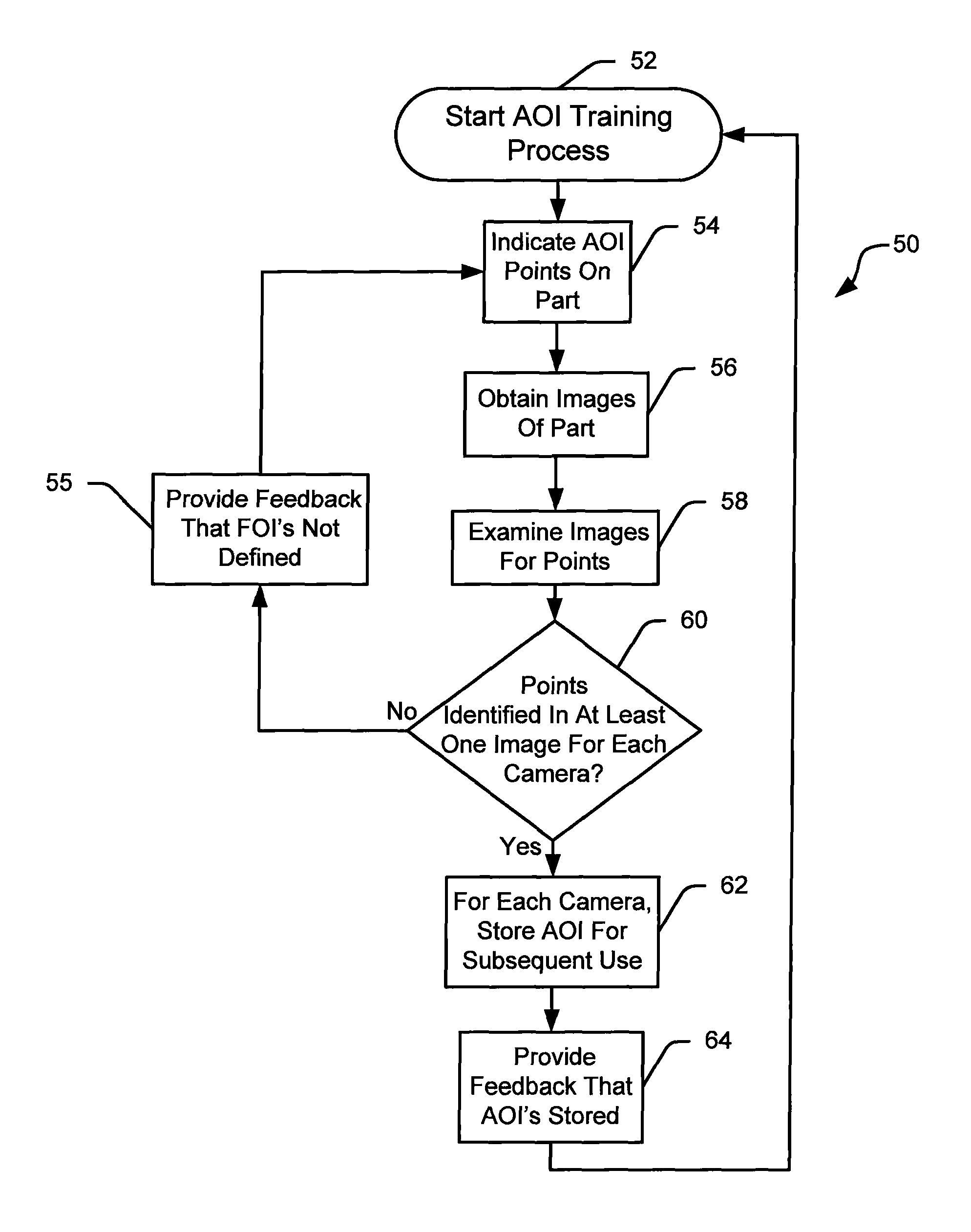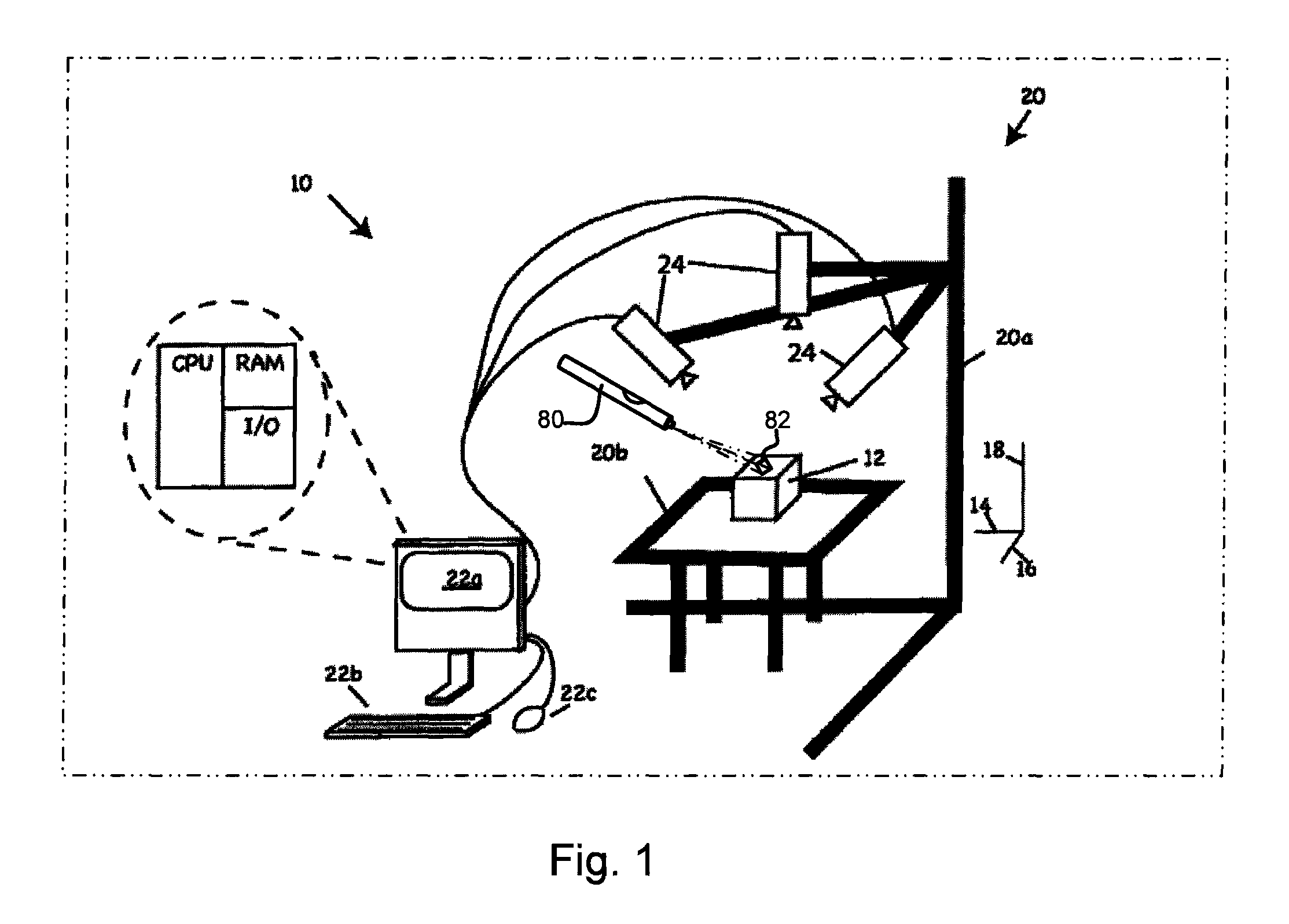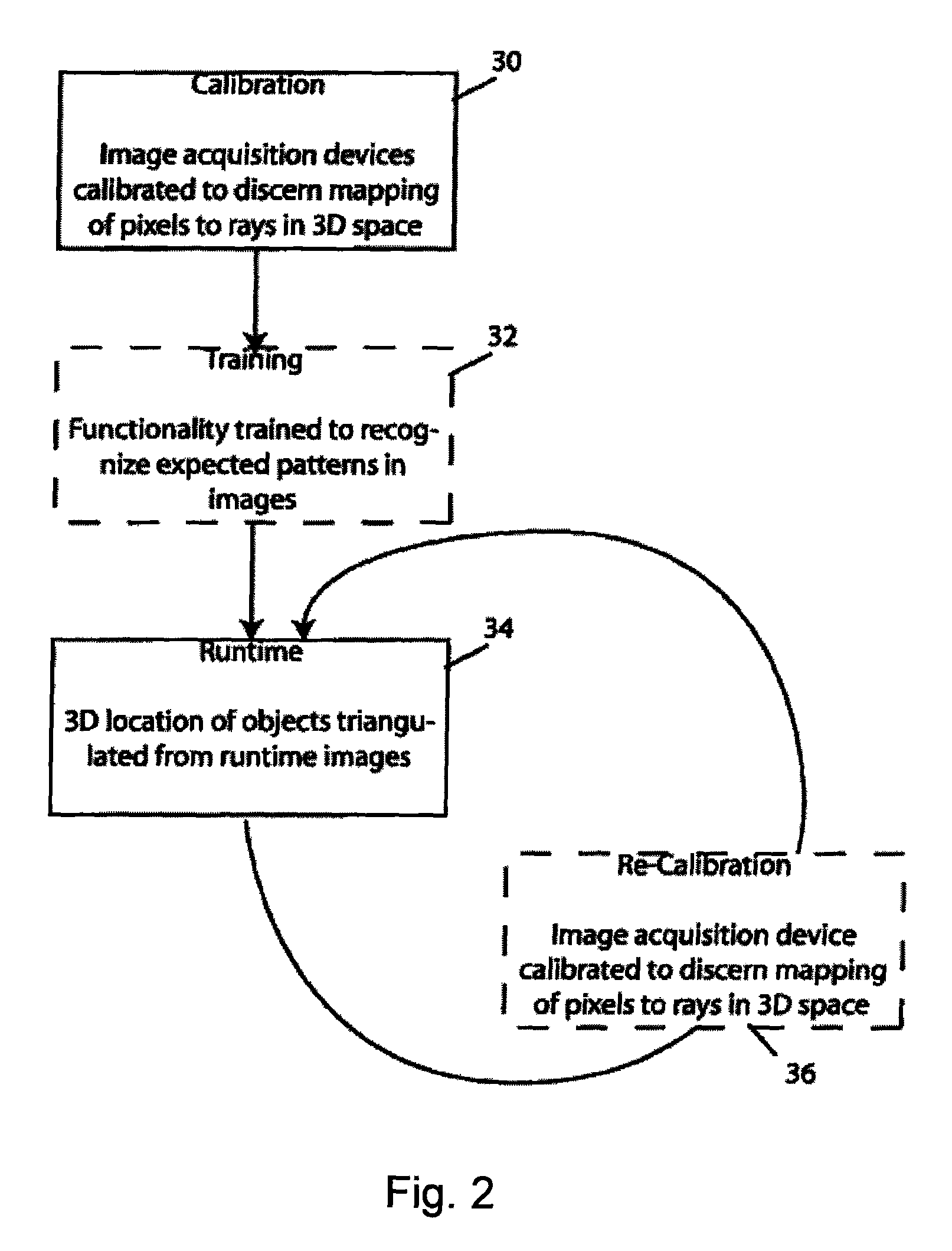Methods and apparatus for practical 3D vision system
a 3d vision and system technology, applied in the field of machine vision, can solve the problems of inability to achieve real-time application, requires contact, requires manual intervention, and requires too much processor power to be practical
- Summary
- Abstract
- Description
- Claims
- Application Information
AI Technical Summary
Benefits of technology
Problems solved by technology
Method used
Image
Examples
Embodiment Construction
[0055]FIG. 1 depicts a machine vision system 10 according to the invention capable of determining the pose of an object 12 in three dimensions by triangulation of data gleaned from multiple images of the object. In the illustrated embodiment, the pose is defined position and orientation of the object in three-dimensional space—or, more precisely, the position of the object along x-, y- and z-axes 14, 16, 18 as well the object's pitch, roll and yaw relative thereto. In other embodiments, pose might be limited to subsets of these spatial characteristics (e.g., position along axis 16 and yaw; position along axes 14-18; roll; etc.). Illustrated axes 14-18 are aligned with a frame 20 of the vision system 10; though, in other embodiments, other frames of reference may be used. Frame 20 of the illustrated embodiment is figuratively represented by camera mounts 20a and platform 20b depicted with heavy shading; though, in other embodiments, other or no such members need be employed.
[0056]Sys...
PUM
 Login to View More
Login to View More Abstract
Description
Claims
Application Information
 Login to View More
Login to View More - R&D
- Intellectual Property
- Life Sciences
- Materials
- Tech Scout
- Unparalleled Data Quality
- Higher Quality Content
- 60% Fewer Hallucinations
Browse by: Latest US Patents, China's latest patents, Technical Efficacy Thesaurus, Application Domain, Technology Topic, Popular Technical Reports.
© 2025 PatSnap. All rights reserved.Legal|Privacy policy|Modern Slavery Act Transparency Statement|Sitemap|About US| Contact US: help@patsnap.com



